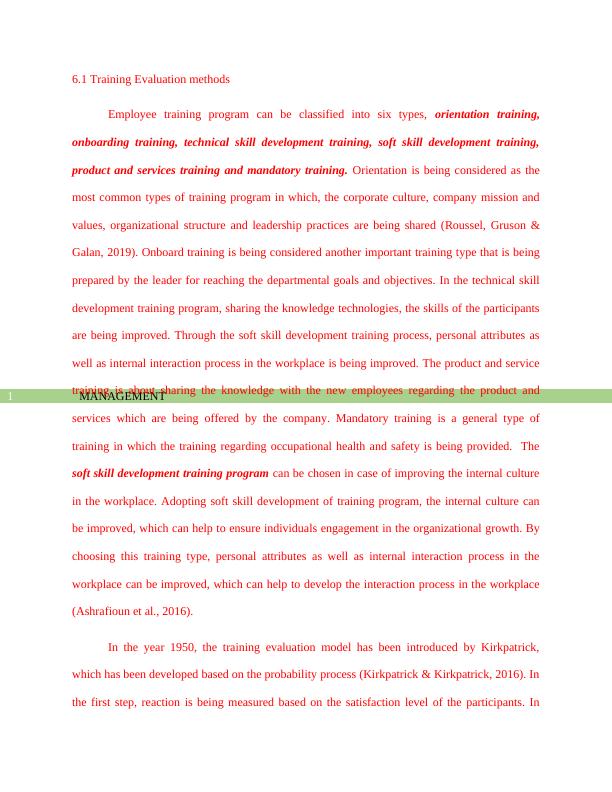Training Evaluation Methods in Management
4 Pages672 Words218 Views
Added on 2022-11-25
About This Document
This article discusses the different types of training programs in management and the evaluation methods used to assess their effectiveness.
Training Evaluation Methods in Management
Added on 2022-11-25
ShareRelated Documents
End of preview
Want to access all the pages? Upload your documents or become a member.
Human resource management.
|6
|261
|69
Coaching and Mentoring in Management
|4
|593
|216
Management: Leading Mentoring and Coaching in Learning Context Essay 2022
|8
|2430
|11
Importance of Mentoring for Employee Development in Organizations
|7
|251
|277
Implementing Coaching and Mentoring
|19
|6197
|13
Assignment Coaching & Mentoring
|8
|2025
|391


